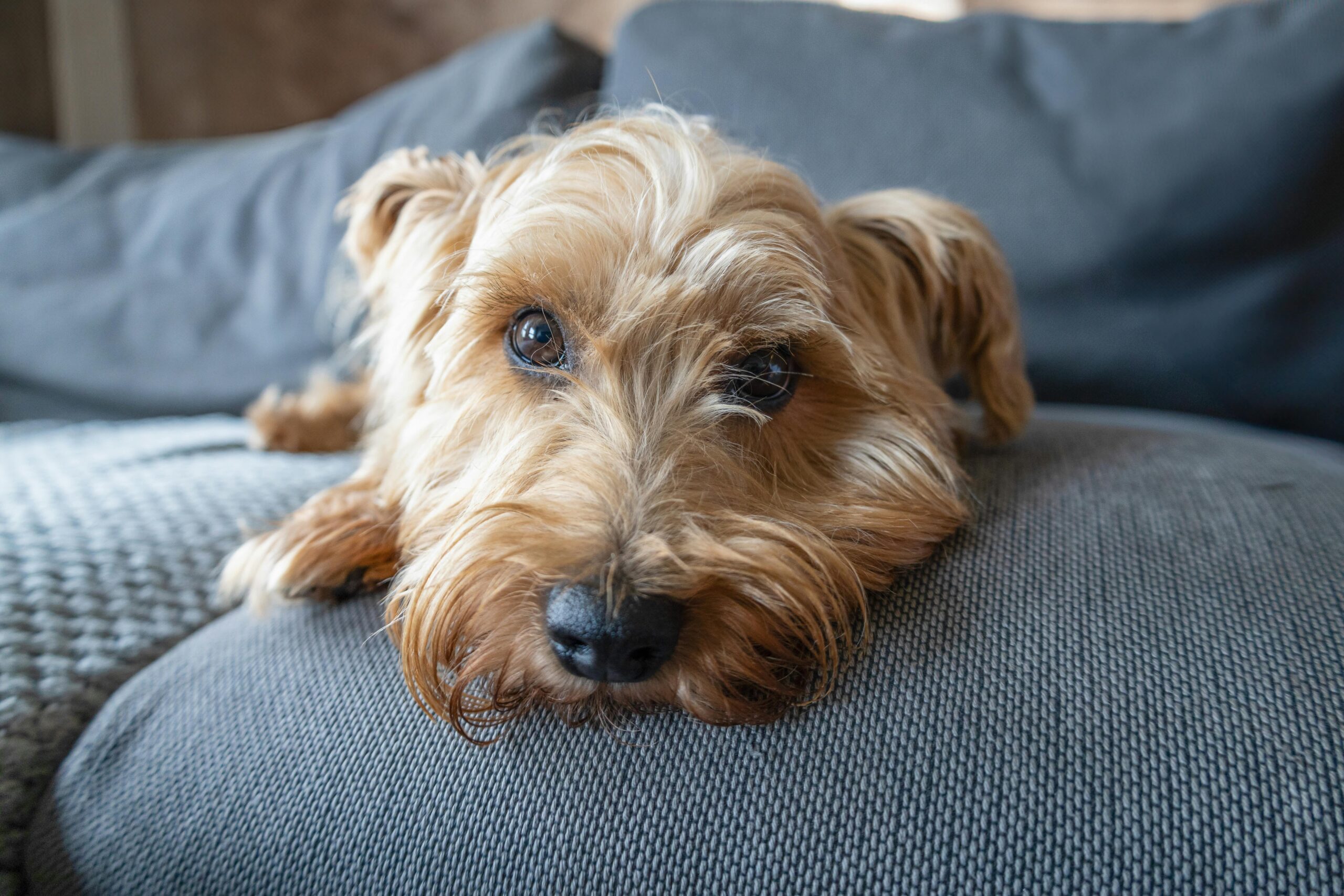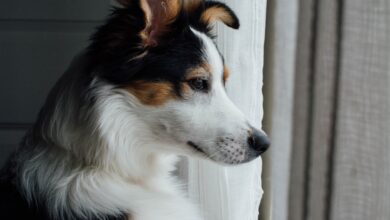Uncovering the Root Cause: Why is Your Dog Losing Hair on Their Face?

Why is Your Dog Losing Hair on Their Face?
Facial hair loss in dogs can be a concerning issue for pet owners. This condition can be attributed to various underlying causes, including allergies, parasitic infestations, and hormonal imbalances. Accurately identifying the underlying cause of facial hair loss is essential to provide effective treatment and care.
Examining the common causes of facial hair loss in dogs can help owners understand the potential factors contributing to the issue and take appropriate measures to address it.
Key Takeaways
- Allergies, parasites, skin infections, hormonal imbalance, genetics, breed-specific factors, and environmental factors can all contribute to hair loss on a dog’s face.
- Allergies play a significant role in canine hair loss, and identifying and addressing the allergen is crucial for treatment.
- Parasites such as mites and fleas, as well as bacterial and fungal skin infections, can cause hair loss on a dog’s face and require veterinary intervention.
- Hormonal imbalances, such as hypothyroidism or Cushing’s disease, can lead to facial hair loss in dogs and should be diagnosed and treated by a veterinarian.
- Genetic and breed-specific factors, as well as environmental influences, can also play a role in facial hair loss in dogs, and seeking veterinary care is essential for proper diagnosis and treatment.
Common Causes of Hair Loss on a Dog’s Face
Allergies and Hair Loss
Just like humans, dogs can experience allergic reactions to environmental factors such as pollen, dust, and certain foods. When a dog is exposed to an allergen, it can lead to itching and irritation, which may result in excessive scratching and hair loss on the face.
Skin Infections and Hair Loss
Additionally, skin infections such as bacterial or fungal infections can also contribute to hair loss on a dog’s face. These infections can cause inflammation and discomfort, leading to scratching and rubbing of the affected area, further exacerbating the hair loss.
Understanding the Causes of Hair Loss
It’s essential to identify the underlying cause of hair loss on a dog’s face to provide the appropriate treatment and prevent further hair loss. By understanding the causes of hair loss, dog owners can take steps to prevent allergies and skin infections, and provide their dogs with the care they need to maintain a healthy coat.
Understanding the Role of Allergies in Canine Hair Loss
Allergies play a significant role in canine hair loss, particularly on the face. Dogs can develop allergies to a wide range of substances, including pollen, mold, dust mites, and certain foods. When a dog comes into contact with an allergen, it can trigger an immune response that leads to itching, redness, and inflammation of the skin.
This can result in excessive scratching and rubbing of the face, leading to hair loss in the affected areas. Allergies can be seasonal or year-round, and it’s important to identify the specific allergen causing the reaction in order to provide appropriate treatment and management for your dog’s condition. In addition to environmental allergens, dogs can also develop food allergies that may contribute to facial hair loss.
Common food allergens for dogs include beef, chicken, dairy, and wheat. If your dog is experiencing hair loss on their face, it may be worth considering a food allergy as a potential cause. Working with your veterinarian to conduct allergy testing and identify the specific allergen causing your dog’s reaction is essential in order to develop an effective treatment plan.
Identifying Parasites and Skin Infections as Culprits for Facial Hair Loss in Dogs
Parasites such as fleas, ticks, and mites can also contribute to hair loss on a dog’s face. These pesky critters can cause irritation and discomfort for your dog, leading to excessive scratching and biting at the affected areas. In addition to parasites, bacterial and fungal skin infections can also lead to hair loss on a dog’s face.
These infections can cause inflammation and itching, prompting your dog to scratch and rub at the affected areas, resulting in further hair loss. It’s important to regularly check your dog for signs of parasites, such as flea dirt or ticks, and to promptly address any infestations with appropriate treatment. Additionally, if you notice any signs of skin infection, such as redness, swelling, or discharge, it’s crucial to seek veterinary care in order to properly diagnose and treat the condition.
By addressing parasites and skin infections promptly, you can help prevent further hair loss and discomfort for your dog.
The Impact of Hormonal Imbalance on a Dog’s Facial Hair
Hormonal imbalances can also play a role in facial hair loss in dogs. Conditions such as hypothyroidism or Cushing’s disease can lead to changes in a dog’s coat, including thinning or loss of hair on the face. Hormonal imbalances can also contribute to skin issues such as dryness or flakiness, which may prompt your dog to scratch at their face, further exacerbating the hair loss.
If you suspect that hormonal imbalance may be contributing to your dog’s facial hair loss, it’s important to seek veterinary care for proper diagnosis and treatment. Blood tests and other diagnostic tools can help identify any underlying hormonal issues that may be affecting your dog’s coat and skin. By addressing hormonal imbalances, you can help restore your dog’s coat and alleviate any discomfort they may be experiencing.
Exploring Genetic and Breed-Specific Factors in Canine Hair Loss
Breeds with Natural Hair Loss
For instance, breeds like the Chinese Crested or the Xoloitzcuintli are known for their lack of hair or sparse coat, making them more prone to sunburn or skin irritation on their faces.
Breeds with Skin Fold Dermatitis
Additionally, breeds such as the Bulldog or Shar Pei are prone to skin fold dermatitis, which can lead to irritation and hair loss on the face.
Proactive Care for Your Dog’s Skin and Coat
If you have a breed that is known for coat or skin issues, it’s essential to be proactive in caring for your dog’s skin and coat to prevent facial hair loss. This may include regular grooming, cleaning of skin folds, and protection from sun exposure. Understanding the specific needs of your dog’s breed can help you provide appropriate care to maintain their coat and skin health.
Environmental Factors and Their Influence on Facial Hair Loss in Dogs
Environmental factors such as sun exposure or harsh weather conditions can also impact a dog’s facial hair. Just like humans, dogs can experience sunburn if they are exposed to UV rays for extended periods of time. This can lead to redness, irritation, and even blistering on the face, which may result in hair loss.
Additionally, extreme weather conditions such as cold temperatures or dry air can contribute to dryness or flakiness of the skin, prompting your dog to scratch at their face and potentially cause hair loss. It’s important to take steps to protect your dog from environmental factors that may impact their facial hair. This may include providing shade and shelter from the sun, using pet-safe sunscreen for outdoor activities, and ensuring that your dog has access to proper hydration and moisture during dry or cold weather conditions.
Seeking Veterinary Care for Diagnosis and Treatment of Canine Facial Hair Loss
If you notice that your dog is experiencing facial hair loss, it’s crucial to seek veterinary care for proper diagnosis and treatment. Your veterinarian can conduct a thorough examination of your dog’s skin and coat, as well as any necessary diagnostic tests to identify the underlying cause of the hair loss. Once the cause has been determined, your veterinarian can work with you to develop an appropriate treatment plan tailored to your dog’s specific needs.
Treatment for facial hair loss in dogs will vary depending on the underlying cause. This may include medications for allergies or skin infections, hormonal therapy for imbalances, or dietary changes for food allergies. Additionally, your veterinarian may recommend grooming or skincare practices to help promote healthy regrowth of your dog’s facial hair.
In conclusion, there are a variety of potential causes for facial hair loss in dogs, ranging from allergies to parasites to hormonal imbalances. By understanding the common causes of this issue and seeking veterinary care for proper diagnosis and treatment, you can help address the root cause of your dog’s facial hair loss and provide them with the care they need for healthy skin and coat. By being proactive in caring for your dog’s skin and coat health, you can help prevent facial hair loss and ensure that your furry friend is happy and comfortable for years to come.
In conclusion, it is evident that the impact of climate change on our planet is significant and far-reaching. From rising global temperatures to extreme weather events, the consequences of climate change are already being felt around the world. It is crucial for individuals, communities, and governments to take action to mitigate these effects and work towards a more sustainable future. This may involve reducing carbon emissions, investing in renewable energy sources, and implementing policies to protect vulnerable ecosystems. By taking proactive measures to address climate change, we can help safeguard the health of our planet for future generations.
read more about: tips for keeping your hairless dog healthy and happy.

